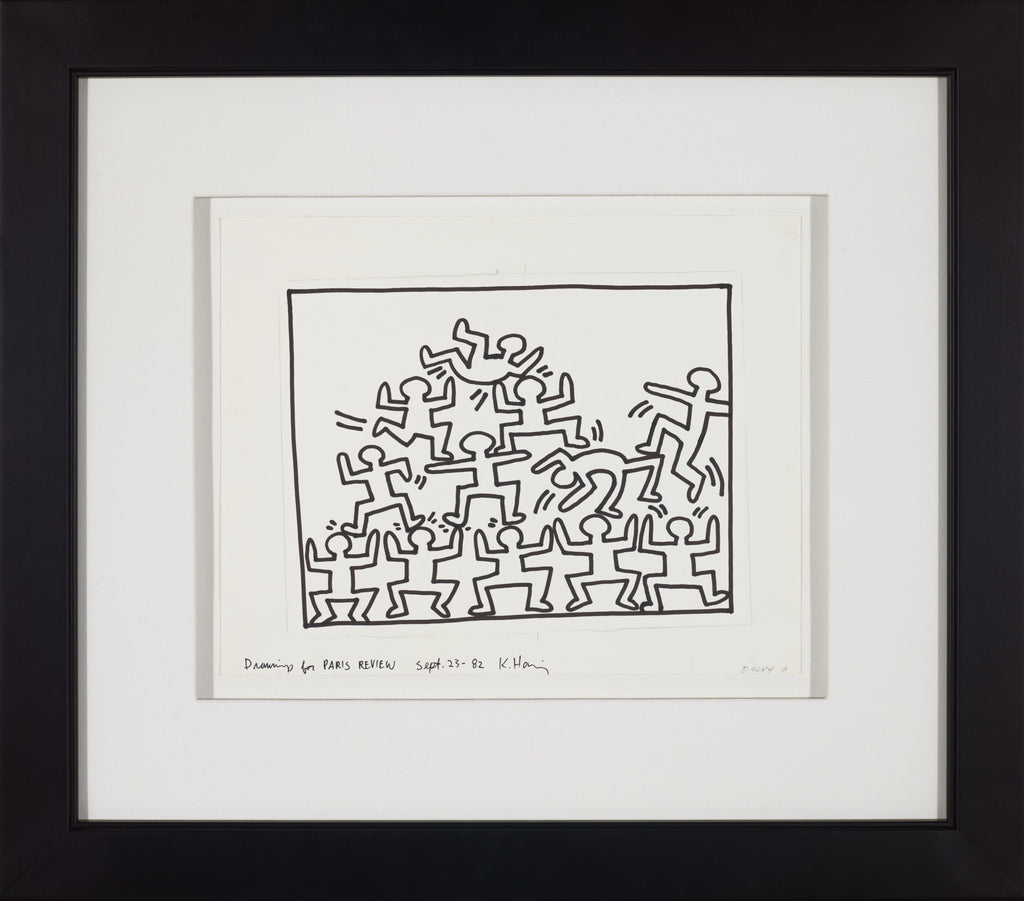Upload a photo of your space
For best results we recommend marking 10 inches on your wall with tape to get a sense of scale. Make sure to have the floor visible in the photo.


About the Work
"Drawings for Paris Review" is an ink and graphite on paper drawing created by Keith Haring in 1982. The drawing is signed, titled, and dated 'Drawings for PARIS REVIEW Sept. 23- 82 K. Haring' lower left. The image size is 8 x 10.25" and the artwork is framed in a contemporary black frame. The artwork ships framed.
Once owned by the esteemed Whitney Museum curator, Richard D. Marshall, Drawings for Paris Review was originally created for the cover of Issue 85, Fall 1982 of The Paris Review literary magazine. Ahead of publication, the cover design underwent a modification, adding a vibrant red background that intensified the impact of Haring's distinct graphic style. Drawings for Paris Review showcases Haring's signature approach with tiers of dynamic dancing figures forming a precarious human pyramid, exuding boundless energy and movement.
In the midst of the AIDS crisis, Haring sought to celebrate and unite music, movement and the interconnectedness of the human spirit using his exuberant genderless figures. These dancing figures with expressive gestures and dynamic lines evoke a feeling of rhythm and uninhibited freedom, not only paying homage to the rhythmic energy of the NYC club scene, but also taking on a larger meaning of togetherness, unity and perseverance in the face of the AIDS epidemic.
About the Artist
Keith Haring was a social activist and artist who wasn’t afraid to depict and publicize controversial topics such as war, sexuality, life, and death with his art. Haring used New York City - the walls, stations, and buildings - as his canvas, creating masterpieces for the public eye. His signature cartoon style combined his outspoken political and social activism place Haring amongst the legends in the art world. Born May 4, 1958, in Reading, Pennsylvania, Haring grew up fascinated by the cartoon art of Walt Disney, Charles Schultz, and even Dr. Seuss. Haring’s father also drew cartoons as a hobby in his free time, inspiring a young Haring to perhaps make his own one day. Eventually, as a grown man, he moved to New York City to enroll at the School of Visual Arts. It is there Haring found his artistic peers and social niche and became acquainted with Jean-Michel Basquiat and Kenny Scharf, among other individuals in the underground art scene.
Please utilize the AR experience in a well-lit room.
Scan the room for surface detection.

Artwork will place in your room.
Using your fingers, align the horizontal white line
with your floor.

Double tap the artwork to scale to 100% size
and pinch to move on the screen.









